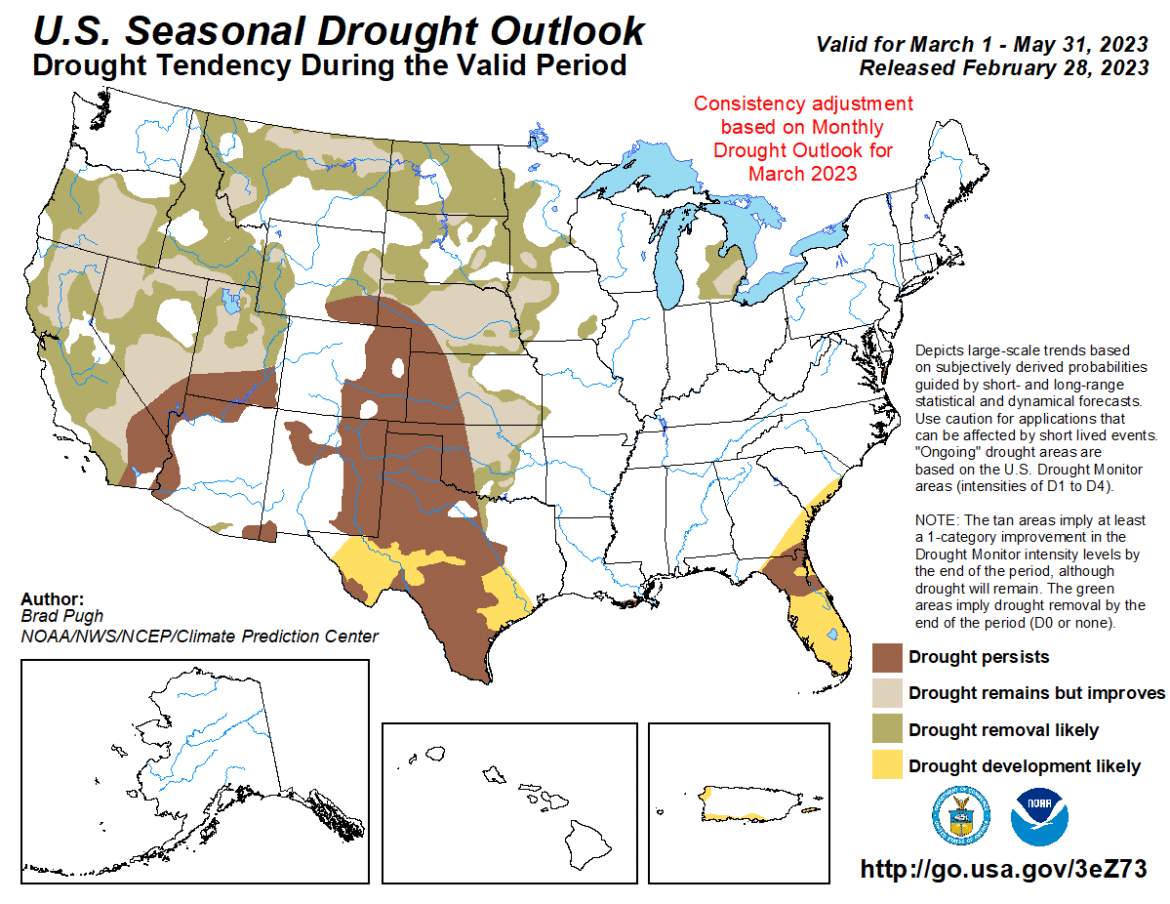A year ago, drought conditions were affected 75% of the Continental U.S. Today that figure has fallen to just under 55%. 2022’s drought was the most widespread the U.S. had seen since 2012 and for the Northern Plains it followed 2021, a year that was anecdotally considered by many producers to be the driest since 1988.
Conditions are improving as the La Nina weather pattern breaks up, but for agriculture we’re not out of the woods yet.
The updated Seasonal Drought Outlook from the National Weather Service’s Climate Prediction Center expanded the improvement and removal of drought across California and the Great Basin based on above-normal snow water equivalent values along with the March outlook favoring above-normal precipitation and below-normal temperatures.
Northern Plains areas have either drought easing or drought removal in the 90-day outlook. But the Central and Southern Plains are expected to either continue in drought or have drought conditions intensifying. The latest Southern Plains drought assessment features very little improvement from weakening La Nina conditions in the Pacific Ocean.
Since mid-January, a pattern change brought drier conditions to the West following a prolonged series of Pacific storms and atmospheric river events. Despite the drier conditions, snowmelt into streams, soils and reservoirs continued to improve drought conditions across portions of California, the Great Basin and central Rockies. Precipitation was more hit and miss across the northern Rockies and Northwest, resulting in a few areas of degradation.
The Spring months are a transitional period for climatological precipitation, as the wet season across the West winds down and Gulf moisture begins penetrating further north and west across the lower Mississippi Valley and Great Plains. Spring storm systems can bring heavy precipitation to the Plains due to increased moisture availability, while melting snowpacks provide a source for soil moisture recharge ahead of the growing season.
During March – May 2023, La Niña conditions are favored to erode across the equatorial Pacific, which increases overall forecast uncertainty. Much above-normal snowpack conditions, coupled with wet short and medium range forecasts favor continued drought reductions across northern California and the Northwest, while drier conditions should promote drought persistence for the Southwest.
Melting snows and increased climatological precipitation should provide opportunities for drought improvements across the Northern and Great Plains regions, with improvement chances more limited across the High Plains. The CPC seasonal outlook favors above-median precipitation for the Midwest , which should allow lingering drought areas to continue shrinking. Additional drought development and expansion is likely across Texas, as a dry spring cwill exacerbate drying soils and vegetation, leading moisture deficits to continue to increase.
###
National Weather Service


